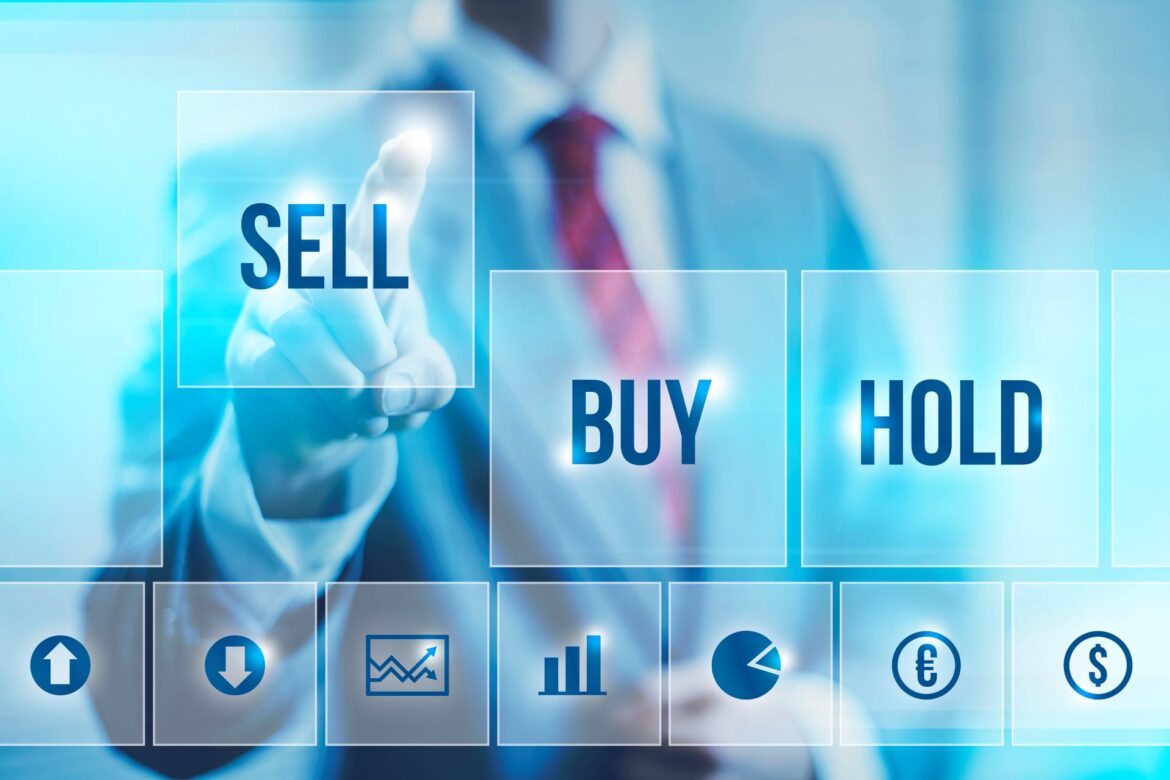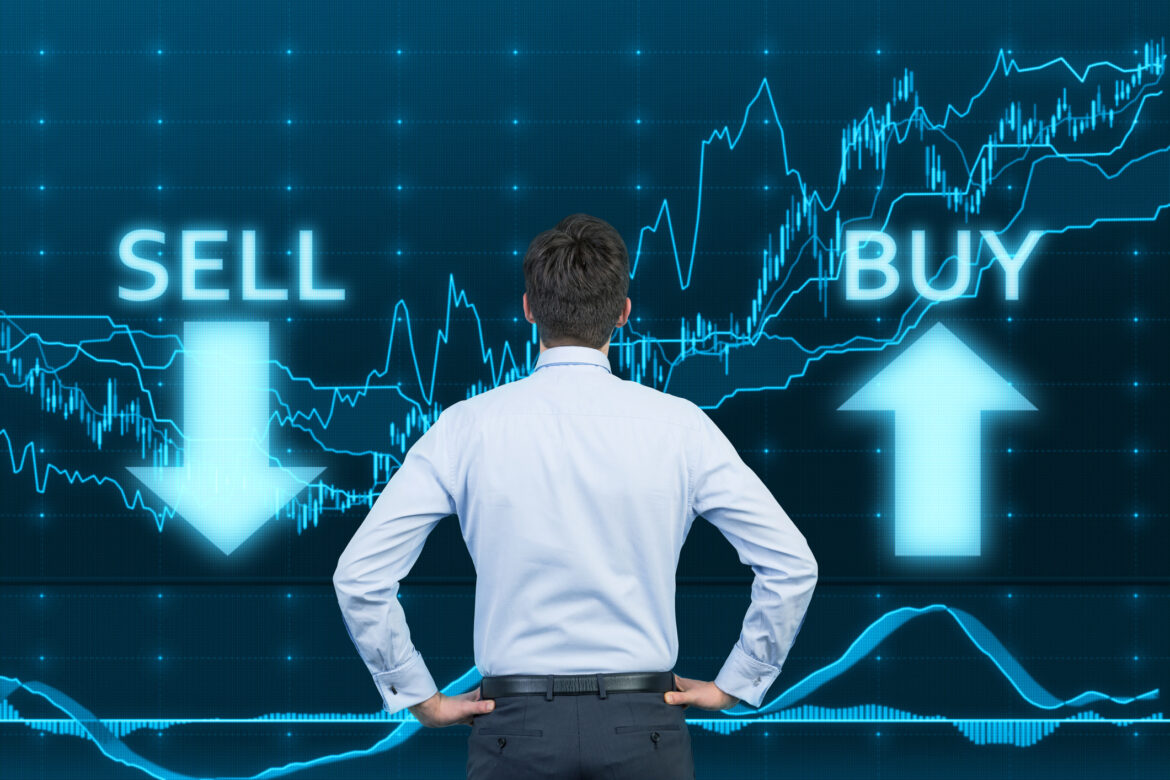
“My father remarried at the age of 65. He kept his house in the revocable trust where he had control of his assets.”
Source link
Sell
The stock continues to beat the market decade after decade. Will the run continue?
Berkshire Hathaway (BRK.A 0.45%) (BRK.B 0.80%) has proven to be one of the most profitable investments in history. Since 1980, the shares have risen more than 2,000-fold! A $100 investment would now be worth about $250,000.
Now, with a market cap of $900 billion, most of Berkshire’s biggest gains are likely behind it. But that hasn’t stopped the stock from doubling the return of the S&P 500 during the past three years.
But what should investors be thinking right now? Is Berkshire stock a buy, sell, or hold?
Conventional wisdom doesn’t apply to Berkshire
For decades, investors have expected Berkshire’s returns to slow down. And they have. From 1980 to 1990, the shares increased 28 times in value. From 1990 to 2000, they rose about sixfold in value. From 2000 to 2010, they roughly doubled. And in the most recent decade, they roughly tripled in value.
In general, the pace of Berkshire’s gains have slowed, but the shares continue to rise decade after decade, typically faster than most market indexes. That’s quite a feat. After all, the larger an investment portfolio becomes, the more difficult it is to outperform the market. That’s because, now armed with a $900 billion market cap, Berkshire’s investing universe is relatively small. Even if it invested several billion dollars in a company whose stock price quadrupled in a single year, it wouldn’t move the needle very much for Berkshire’s mammoth portfolio.
“The highest rates of return I’ve ever achieved were in the 1950s. I killed the Dow. You ought to see the numbers,” Buffett famously quipped in 1999. “But I was investing peanuts then. It’s a huge structural advantage not to have a lot of money. I think I could make you 50% a year on $1 million. No, I know I could. I guarantee that.”
The fact that Berkshire continues to beat the market has surprised many experts, but in reality, this performance makes a lot of sense. Buffett, arguably the best investor of all time, remains at the helm. He has also retained the help of other legendary investors, including Ted Weschler, Todd Combs, and the late Charlie Munger. Together, Buffett and his team still have plenty of investment options, even if they are relegated to larger companies. Right now, for example, Apple is Berkshire’s largest holding, a stake worth roughly $153 billion. Apple itself, however, is worth more than $2.6 trillion. Berkshire could theoretically invest its entire portfolio several times over in Apple alone and still not be close to owning the entire business.
So yes, Berkshire’s returns have slowed down. And yes, its investing universe is more limited than in the past. But the keys to the company’s success — a collection of legendary investors making long-term investments — remains in place. Expect Berkshire to continue beating the market in the decades to come.
But is the stock a buy right now?
Just because Berkshire’s portfolio is poised to perform well during the coming years doesn’t necessarily make the stock a buy. After all, it’s possible that Berkshire’s stock is overpriced, meaning you’ll overpay for its portfolio’s performance, hurting your own investment returns.
Is Berkshire stock priced appropriately right now? Valuing the company is notoriously difficult. There is its publicly traded portfolio, which is fairly easy to value because there are publicly traded prices to reference. But most of Berkshire’s value is tied up in its portfolio of privately held businesses — everything from insurance underwriters to national railroads.
A simple way to assess Berkshire’s current valuation is by looking at its price-to-book ratio. This essentially gauges how much the market is willing to pay for Berkshire’s assets. Today, the shares trade at a price-to-book ratio of 1.6, just above its long-term average. Relatively speaking, Berkshire stock isn’t a bargain versus previous years, but it’s also not overly expensive.
That’s especially true given that the company has repurchased tens of billions of dollars of its shares in recent years — an act that, while value accretive for shareholders, actually decreases the company’s book value, creating a disconnect between accounting value and true value.
Overall, is Berkshire stock still a buy after all these years? Absolutely. All the pieces remain in place for its continued success, and the valuation, though not a bargain, is still a fair price to pay for one of the market’s highest-quality businesses.
1 Reason to Buy Walgreens, 1 Reason to Sell, and a Better High-Yield Stock to Buy Either Way
Walgreens Boots Alliance (WBA 3.19%) has been a brutal investment for the past nine years. Shares are down more than 75% from the all-time high, reached way back in early 2015. The one saving grace for investors during much of this period was the company’s dividend, which the Board was still steadily increasing every year. From 2014 through late 2023, the payout was increased 40%.
Well, even that’s gone, with the near-halving of the dividend late last year now resulting in a payout that’s 26% lower than it was in 2015.
The good news is a new CEO is taking steps to slash costs and stimulate profitable growth. Is Walgreens stock a buy now? Keep reading for the one reason why it could be compelling, a major yellow flag that says maybe it’s not, plus a stock that you may want to consider instead.
Reason to buy: A CEO who’s accelerating the turnaround
Tim Wentworth was named CEO last Oct. 11, and he didn’t waste any time in enacting cost-cutting efforts at the company. When it reported first quarter results 12 weeks later, one of the first lines in the press release announced the 48% dividend cut.
This move made a bold statement that there would be no sacred cows in this turnaround. Prior to the cut, Walgreens had increased its dividend every year for a remarkable 47 years. Wentworth — with the backing of the Board of Directors, which has the final say on things like dividends — has quickly taken action to get Walgreens’ financial house in order so that it can enact the meaningful changes that it will take to reinvigorate the business and return it to profitable growth.
In addition to the dividend cut, the company has also taken some real steps to lower costs and expenses. The company says it will cut $1 billion in spending versus 2023, through both lower capital expenditures and working capital improvements.
Reason to sell: The math is still a mess
Wentworth is acting quickly, and with Board backing. His experience in the healthcare industry is a real plus. But the reality is, Walgreens’ fast moves are as much a product of need as much a desire to improve the business.
Despite the improvements on the top line — revenue was up 8% in the first half of the fiscal year — non-pharmacy retail sales declined 5.3%. Management says that seasonality played some role in this, but they also lowered profit expectations for the full year, citing the competitive environment. I think those two things are more related than just seasonality.
At the same time, one of the company’s biggest initiatives, healthcare, took another step backwards. Walgreens took a $5.8 billion impairment to its investment in VillageMD, reflecting much lower expectations for its full value over time. The upshot is that VillageMD revenues increased 20% last quarter, but the healthcare business continues to generate an operating loss.
This adds to Walgreens’ cash flow woes. The company has burned $918 million in operating cash through the first half of the year, and spent $858 million on capital expenditures. That’s a lot of money that has to come off the balance sheet to cover those checks.
Even with promised expense and cost cuts, Walgreens has a lot of work to do. In the first six months of the fiscal year, its working capital has remained unchanged, but it has burned through some $11 billion in total assets on its balance sheet.
About half of that is the VillageMD impairment, but what is easy to miss is that it has realized $1.7 billion in proceeds from the sale of its equity stake in Cencora so far this year, but Cencora’s market value has increased enough to offset the impact of these sales on the balance sheet.
And as measured by cash in and cash out, as generated by its operations, Walgreens is a long way from turnaround complete. That’s particularly notable for income investors who may think the “new” dividend is safe. Barring a reversal in those cash flows, another cut is surely on the table.
A better stock to buy instead
Whether you’re looking for steady income, a high yield, or a likely market-beater over the long term, Realty Income (O 1.10%) may be a better choice. As a starting point, its dividend is very secure, protected by strong cash flows from its tenants that rely on the properties they lease from Realty Income to generate their sales and profits.
Realty Income is one of the largest net lease REITs — it owns the real estate, while its tenants pay it rent, cover property taxes, and pay for improvements and maintenance — in the world. Its tenants include Walgreens and competitor CVS Health, along with hundreds of other tenants in retailing, restaurants, experiential, and other e-commerce and macroeconomic resilient businesses.
One of the best capital allocators in real estate, Realty Income’s business is built on creating value for its tenants and its investors, and growing the payout is a key tenet of its business model. It has increased its dividend not just every year since its 1994 IPO, but every quarter. It’s also a monthly payer, a nice bonus for income investors.
Put it all together, and you have a stronger business, a safer dividend, and a payout that’s still growing. Did we mention the yield of 5.7% at recent prices is also better than Walgreens’ 4.6% yield? There’s that, too.
Skybridge Capital Founder Advises ‘Act Like You’re Dead With Your Bitcoin and Don’t Sell’
 Skybridge Capital founder Anthony Scaramucci has advised bitcoin investors to act like they are dead with their coins and not sell them. “Don’t do anything with it,” he recommended, emphasizing: “The dead people at Charles Schwab do far better than the living people.” Anthony Scaramucci’s Bitcoin Investing Advice Skybridge Capital founder Anthony Scaramucci offered some […]
Skybridge Capital founder Anthony Scaramucci has advised bitcoin investors to act like they are dead with their coins and not sell them. “Don’t do anything with it,” he recommended, emphasizing: “The dead people at Charles Schwab do far better than the living people.” Anthony Scaramucci’s Bitcoin Investing Advice Skybridge Capital founder Anthony Scaramucci offered some […]
Source link
Fool.com contributor Parkev Tatevosian evaluates SkyWater Technologies (SKYT -4.69%) stock and lets you know whether investors should buy.
*Stock prices used were the afternoon prices of March 10, 2024. The video was published on March 12, 2024.
Parkev Tatevosian, CFA has no position in any of the stocks mentioned. The Motley Fool has no position in any of the stocks mentioned. The Motley Fool has a disclosure policy. Parkev Tatevosian is an affiliate of The Motley Fool and may be compensated for promoting its services. If you choose to subscribe through his link, he will earn some extra money that supports his channel. His opinions remain his own and are unaffected by The Motley Fool.
1 Wall Street Analyst Just Cut Its Nio Price Target by 27%. Is It a Sell?
Investment bank Bernstein has never been a huge fan of Chinese electric car company Nio (NIO 0.52%). Bernstein’s latest move on the EV stock, however, looks downright pessimistic.
Since initiating coverage of Nio stock back in 2021, Bernstein has commented on Nio’s valuation nearly a dozen times, according to data from TipRanks.com. Each time, the banker recommended that investors hold the stock. (Word to the Foolish: On always-optimistic Wall Street, when an analyst tells you a stock is a “hold,” you are best advised to translate that as meaning: “don’t necessarily sell, but definitely don’t buy”).
On Thursday, however, Bernstein did something a little bit different.
Is Nio stock a sell?
Reiterating her hold rating on Nio, Bernstein analyst Eunice Lee slashed her price target on the Chinese automaker by a whopping 27%, from $7.50 per share to just $5.50. The stock, trading at $5.74 a share, is already near that new target.
Some of the reasons for this price target cut were obvious. A putative growth stock, Nio’s Q4 sales actually inched up only 3.6% year over year, and the company lost $789 million. (Nio has, by the way, never earned a profit). What’s really concerning in Lee’s note, however, is her observation that the company’s market share in electric vehicles has fallen by more than half since it first set up shop, skidding from 5% in early 2021 to just 2% in recent months, despite Nio more than doubling the number of EV car models it produces (from three to eight).
With sales stalled, profits nonexistent, competitors getting stronger, and its own market share vanishing, Nio’s future seems uncertain in the extreme. The only real question now is: When will Lee admit that Nio stock is no longer a hold, but actually a sell?
Rich Smith has no position in any of the stocks mentioned. The Motley Fool has positions in and recommends Nio. The Motley Fool has a disclosure policy.
Dogecoin (DOGE) has solidified its position as the eighth-largest cryptocurrency by market capitalization, leaving industry observers amused and sparking humor from Cardano’s founder, Charles Hoskinson. The memecoin experienced a substantial upswing, propelling its market cap to approximately $28 billion, surpassing Cardano’s $27 billion valuation.
Related Reading: Bitcoin On The Brink, Price Soars Above $68,000 – Will BTC Break Its 2021 Record?
DOGE Market Dynamics And Technical Indicators
At the time of writing, Dogecoin was trading at $0.16, reflecting a remarkable 103% surge in the past seven days. This increase catapulted DOGE ahead of major cryptocurrencies like AVAX, DOT and TRON. Despite this positive momentum, technical indicators suggest a nuanced situation.
Source: Coinmarketcap
The Relative Strength Index (RSI) for Dogecoin stands at slightly above 67, signaling an overbought condition. While the price is on an upward trajectory, there is a possibility of susceptibility to a corrective phase. Meanwhile, the Chaikin Money Flow (CMF) at nearly 0.20 presents a mixed picture. A positive CMF indicates strong buying pressure, but an upward trend may also signify potential profit-taking, hinting at a possible sell-off.
Sentiment And Social Activity
Social dynamics appear to play a pivotal role in Dogecoin’s recent surge. The social volume, often linked with price movements, witnessed an uptick, indicating a positive correlation between growing interest and discussions around Dogecoin and its upward momentum.
Weighted sentiment, a crucial metric reflecting community sentiment, has shown an increase, with positive comments outweighing negative ones. This surge in positive sentiment adds fuel to DOGE’s positive momentum in the market.
Holder Metrics, Cautionary Signs
Despite the positive indicators, cautionary signs emerge as the rise in the percentage of short positions against DOGE reveals a cautious sentiment among traders. The increase in short positions suggests a bearish outlook, prompting investors to be mindful of potential impacts on the coin’s prices,
Source: Santiment
Industry Observations
The overtaking of Cardano by Dogecoin in market capitalization has drawn attention from industry observers, including Hoskinson. In a light-hearted manner, he declared the beginning of what many are calling “alt-season.” This observation adds a layer of industry perspective to the ongoing developments in the cryptocurrency market.
That moment Doge flips Cardano. It’s officially alt-season kids pic.twitter.com/cjNGNGKoi3
— Charles Hoskinson (@IOHK_Charles) March 5, 2024
Dogecoin’s recent surge to become the eighth-largest cryptocurrency brings a mix of excitement and caution. While positive sentiment, social activity, and industry observations contribute to its momentum, technical indicators and cautionary signs suggest a need for prudence.
Related Reading: FLOKI Grows Over 300% As Memecoin Breaches $400 Million TVL – Details
Featured image from Freepik, chart from TradingView
Disclaimer: The article is provided for educational purposes only. It does not represent the opinions of NewsBTC on whether to buy, sell or hold any investments and naturally investing carries risks. You are advised to conduct your own research before making any investment decisions. Use information provided on this website entirely at your own risk.














